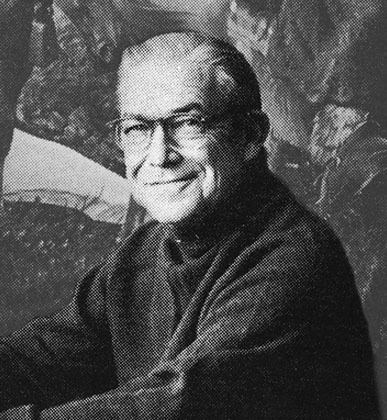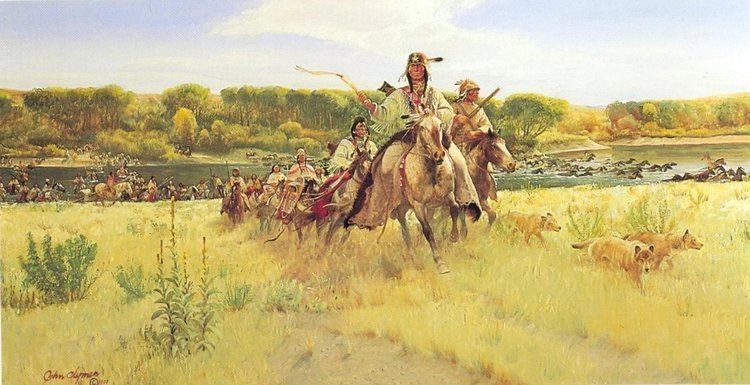Name John Clymer | Education OCAD University | |
 | ||
Books The Western Paintings of John Clymer | ||
John clymer
John Ford Clymer (January 29, 1907 - November 2, 1989) was an American painter and illustrator known for his work that captured nature and the American West.
Contents
- John clymer
- A tribute to my wonderful father in law John Clymer
- The Saturday Evening Post
- Awards
- References

Born in Ellensburg, Washington, Clymer first studied art through the Federal School correspondence course. He continued his study in Canada, where he spent eight years illustrating for Canadian magazines.

In 1932, he married his childhood sweetheart, and five years later, in the fall of 1937, John and Doris Clymer moved to Westport, Connecticut, where he established his career as an illustrator for American magazines, including Argosy, The Saturday Evening Post, Woman's Day and Field and Stream.

While in the Marine Corps, he illustrated for Leatherneck Magazine and the Marine Corps Gazette. His work in advertising included paintings for White Horse Scotch Whisky, the Pennsylvania Railroad and the Chrysler Corporation.

A tribute to my wonderful father-in law, John Clymer
The Saturday Evening Post

Clymer did 80 covers for The Saturday Evening Post. Interviewed by Walt Reed, he recalled:

Awards
In 1976, Clymer received the Prix de West from the Academy of Western Art. His oils and charcoal drawings brought him medals from the Cowboy Artists of America. He was named Western Artist of the Year by the National Wildlife Art Collectors Society. In 1988 he was awarded the Rungius Medal from the National Museum of Wildlife Art (Jackson Hole, Wyoming) for his painting Late Arrivals, Green River Rendezvous. He was made a member of the Royal Canadian Academy of Arts. Clymer died in Bellevue, WA.
Today, his work is on permanent exhibit at the Clymer Museum of Art. located at 416 North Pearl Street in Ellensburg, Washington.
He is sometimes confused with John Clymer, an impressionist painter of landscapes and nautical scenes.
